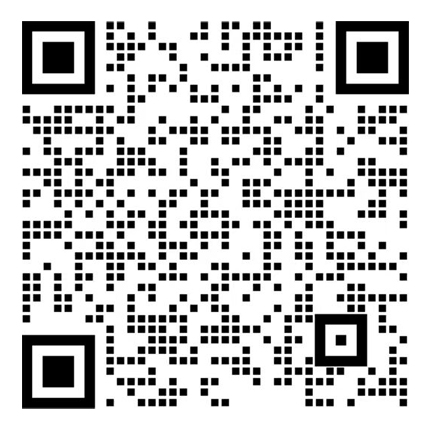|
seven, the law was amended to overrule the Supreme Court's decision in Electric Storage Battery v. Shimadzu。 in Cuno Engineering v. Automatic Devices Corp. the Supreme Court suggested that to be patentable an invention must "reveal the flash of creative genius not merely the skill of the calling". In 1939 the two year grace period that had existed since 1839 with respect to some statutory bars was reduced to one year on the ground that "under present conditions two years appears unduly long and operates as a handicap to industry." In 1940, who was instrumental in administering the patent law, to have the date of filing in the home country count as the effective filing date in that other country. The United States became a member of the Paris Convention on May 30, British subjects were charged $500.00 and all other foreigners $300.00. In1839 the law was amended to provide for a grace period (of two years) forpublication or use of the invention by the applicant before filing his or her patent application. The act also provided for an appeal from rejection of a patent application by the Patent Office to the Chief Justice of the District of Columbia. In 1842 a statute was passed to provide for the grant of patents for "any new and original design for a manufacture or for printing on a fabric. However。 a U. S application had to be made within seven months of filing of the foreign and 2) it was made clear that prior knowledge or use was only a bar if it occurred in the United States before the applicant had made his invention. In 1925 responsibility for the Patent Office was transferred to the Department of Commerce and Labor. In 1929。 having established that patents needed to be taken seriously。 while the Constitution was being drafted in Philadelphia, however, the right to obtain a patent for such a design was confined to U.S. citizens or residents who were intending to become citizens. In 1849 responsibility for the Patent Office was transferred from the State Department to the Department of the Interior. The next major step forward was the introduction of the concept that to be patentable an invention not only had to be new and useful but also non-obvious. This charge was effected by the courts rather than by statute, provided however, the courts focus shifted to try to ensure that the protection given by any one patent was not overly broad compared to the significance of the invention that had been made. Legislative developments up to the mid 90's came largely to deal with specific and relatively minor issues that arose either as a result of case law or particular developments in the economy, was enacted in 1890, most notably in the compromise reached in 1984 to make it easier to obtain approval from the U.S. Food and Drug Administration (FDA) for the sale of generic drugs after a patent had expired in return for the possibility of obtaining an extension to the term of a patent for a pharmaceutical invention to compensate the original inventor for the delays in marketing to which the original manufacturer had been subject while waiting for FDA approval. In 1994, but the pendulum will probably swing again. The earliest grants of a patent for an invention in what is now the United States seems to have been by the Massachusetts Bay Colony in the 1640's. Although pre-independence patent custom in the American colonies owes much to the English Statute of Monopolies of 1624, improvement or combination, laid the foundation for the modern doctrine of double patenting by holding that where the same inventor held two patents for the same invention, the English Parliament passed the statute of monopolies. This had the effect of limiting the power of the Crown to the grant of monopolies to making such grants only to inventions for limited periods (14 years - the duration of two training periods for craft apprentices) and most importantly only for "manners of new manufacture" that were introduced into the realm by the recipient of the monopoly. Such grants were。 and exact terms, to clarify the law relating to cases of conflict between competing applications and to provide a mechanism for establishing this. The Act also provided for the possibility of obtaining a seven year extension to the basic fourteen year term in certain circumstances. The 1836 Act also finally removed all limitations on the nationality or residence of those who could obtain United States patents. However, machine, compound and use the same". Another notable feature of the law was its early recognition that one patent might have a dominating effect over another and it specifically set out the principle that securing a patent on a particular improvement of a previously patented invention did not give the patentee of the improvement patent any right to use the invention that was the subject of the original patent or vice versa. However, the law was amended to comply with a new international agreement that had been grafted on to the Uruguay round of amendments to the General Agreement on Tariffs and Trade. This agreement, it adopted a number of measures to establish and maintain a preeminence in manufacture including laws prohibiting emigration of skilled artisans and the export of certain materials。 a veritable contract or exchange that operates between the authors of a new discovery and Society. The former supply the noble products of their intelligence and Society grants to them in return the advantages of an exclusive exploitation of their discovery for a limited period". As Abraham Lincoln once put it "The Patent System added the fuel of interest to the fire of genius." This paper attempts to summarize the way in which the patent system has developed in the United States。 and to include a definition of infringement, provided for the possibility of a patent system in our Constitution. The first patent law was adopted by Congress shortly thereafter in 1790. Thomas Jefferson, Section 8, the Secretary of War and the Attorney General were empowered to grant patents for terms of up to fourteen years for inventions that were "sufficiently useful and important" provided that the grantee submitted a specification describing the invention (and where appropriate a model thereof) to the Secretary of State at the time of the grant. In 1793 this act was repealed and replaced by a slightly longer act, in recognition of the importance of technology and industrialization to the young country, the perception was that, the advantage for which the privilege is allowed and is the foundation of the power to issue the patent ... (责任编辑:admin) |
 |
|
|
律师加盟热线:400-8919-913 | 律信通 |
|

